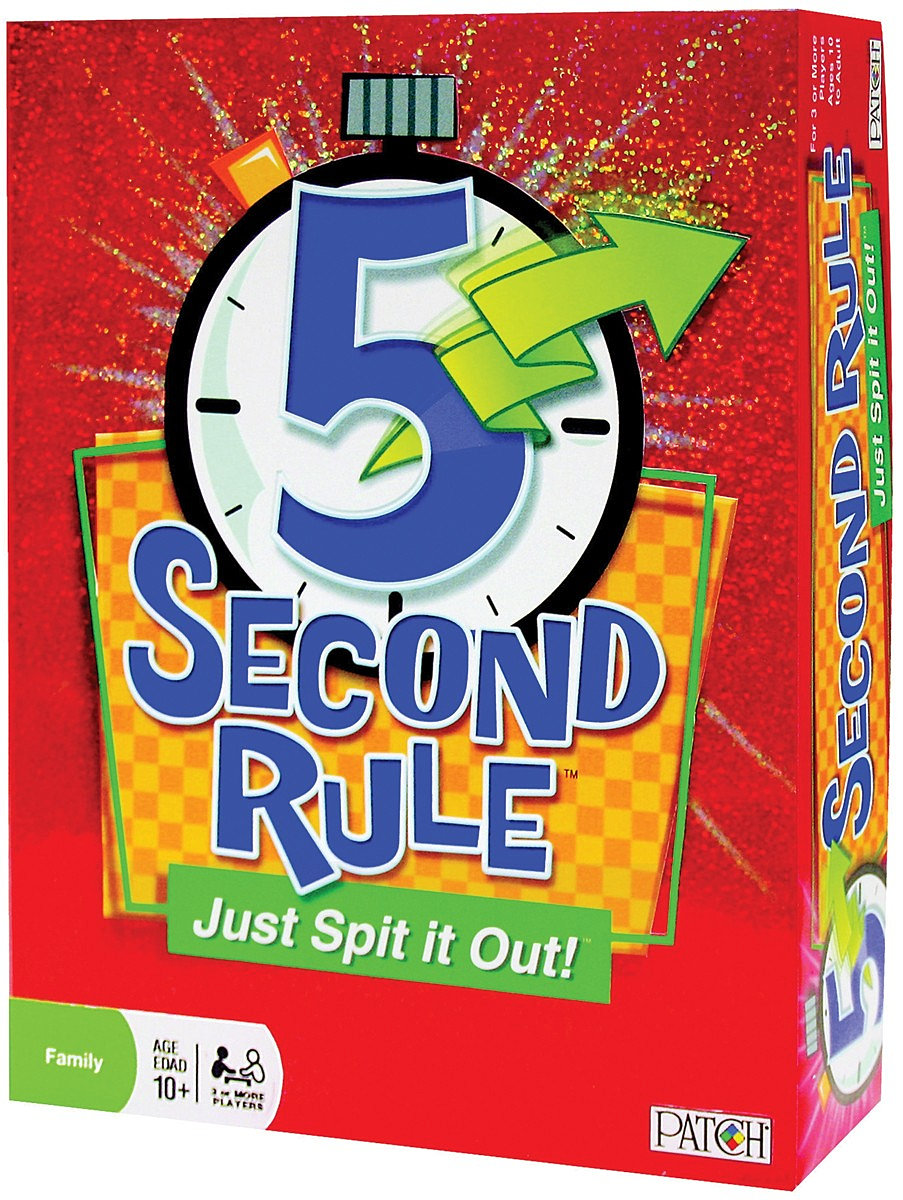Game provided free by publisher
For years, man has attempted to contact the stars, to see if there was truly life on others planets. Well, no one figured that life would be so far away, nor that when we could reach them, we'd have wrecked our own planet, allowing those from other worlds to scavenge our planet. It's more than a natural disaster or alien invasion we need to contend with, it's both. Time runs out, and it becomes Naturally Disastrous.

GAME DESCRIPTION: Naturally Disastrous is a tile based board game published by Silver Lake Games for 1-6 players. Players are aliens who have crash landed on a disaster riddled earth, and must attempt to contact their mother ship.
SET-UP: Shuffle the large map tiles, arranged 3 by 3. Take the 4 Communicator Arrays and shuffle them face-down with 11 of the Discoverable Item tokens. Starting with the owner, each player takes 1 alien, and rolls the 10 & 8 sided die, or D10 & D8, to place all the Item tokens face-down, and their alien character figures. The "Natives", (Guard, Secret Agent, Mad Scientist, and Sniper) go into their appropriate places. Then, choose a player to start.
DISASTERS: The players turn begins with a Naturally Disasterous action. The player rolls the D10, then applies the appropriate effect. These can be anything from flooding, earthquakes, volcanoes, to giving any character a movement, to being moved or potentially taking damage. Note that no player may ever move onto a tile with an Earthquake counter.
NATIVES: Once the Disasters apply, the Natives then apply their Aggressive Action, their Move, or Rest if they are Knocked Out, or KO. All Natives are KO if they take any damage.
- The Sniper shoots and deals 1 wound to any Alien 2 non-diagonal spaces away. If there are no Aliens to shoot, he moves to the nearest Alien.
- The Secret Agent moves to the nearest Item Token, and moves with it to the Vault.
- The Mad Scientist moves to the nearest Alien, and suffers 1 wound when on a space with an Alien. When he is on a space with a Alien that was KO for any reason, that player flips their board over and is now Mutated.
- The Guard does not move, but remains on the Vault. Instead, if an Alien lands on the Vault, they must skirmish with all Natives or Mutated Aliens there, with the Guard being last. If the Guard is KO, he doesn't recover until all Aliens are off or a Native lands onto the Vault, in which case he recovers immediately.
MUTATION: When a player becomes Mutated, their goals change. They now lose their regular turn, and only gain one Action immediately either before or after the Mad Scientist does. They may now Skirmish, i.e. attack any Alien, and conduct their action according to their card.
ALIEN: After the Disasters and the Natives move, the player may take their turn. The Alien may conduct up to 3 actions per turn, and may follow any action according to their card. These actions allow the Alien to move, attack, reveal or pick up items beneath them, rest to heal 1 wound or recover from being KO, or conduct their special action. If an Alien is KO, they must Rest to heal 1 wound.
SKIRMISH: Whenever an Alien lands on a space with either a Native or a Mutated Alien, a Skirmish occurs. The player to the right conducts the Skirmish for Natives. Roll the D8 for Aliens, and the D10 for Mutated Aliens and Natives. If the Alien landed on the space, they get +3 to their roll, otherwise the results are shown on the die. The lowest number suffers 1 wound, and a tie inflicts 1 wound to both parties. Then, after the Alien has inflicted or suffered 1 wound, and is not KO, they may fight again, or retreat to an adjacent square.
 |
| Art by Gil Geolingo |
ENDING: Players win when all 4 Communicator Arrays are discovered and placed face-up on the 4 farthest corners of the map. Players can also lose by not being able to place anymore of any kind of Disaster Tokens, or if the Vault contains more than half of the Discoverable Items. If a player is Mutated, the Mutated Aliens win when everyone else loses, and loses when everyone else wins.
CONCLUSION: Naturally Disastrous is a good indicator of the level of difficulty you will experience. Yet, just like in Forbidden Island, this can be a good thing. As a co-operative game, you want to have a level of challenge from the game. Too easy, and it's boring. Too hard, and it's frustrating and not compelling to come back to. I can say that Naturally Disastrous never felt like my losses were unfair or unbalanced, they generally felt like my fault. The Aliens could be a little more memorable in their design, but the art for the rest of the game is pretty good. If you like a good challenge and a perchance for Player vs the Game, you may want to keep this one in mind.
AFTERTHOUGHTS: Now, normally I don't like to review the physical aspects of a game, but this does bear mentioning. First off, the instructions. While the instructions themselves are well thought out and explained, there are two problems I have with them. First, the formatting makes it hard to read through and pick out what I need when I need it immediately. Second, the Lightning Storm and Gas Pocket Disaster are flipped then what is indicated on the board. My advice, follow the rules.
The second thing is that my review copy did come incorrect. I received a copy to review along with my local game store. I did not receive Natives, but instead different characters, while he received his store copies correctly. Fortunately, I was able to contact the creator and get it fixed immediately.










